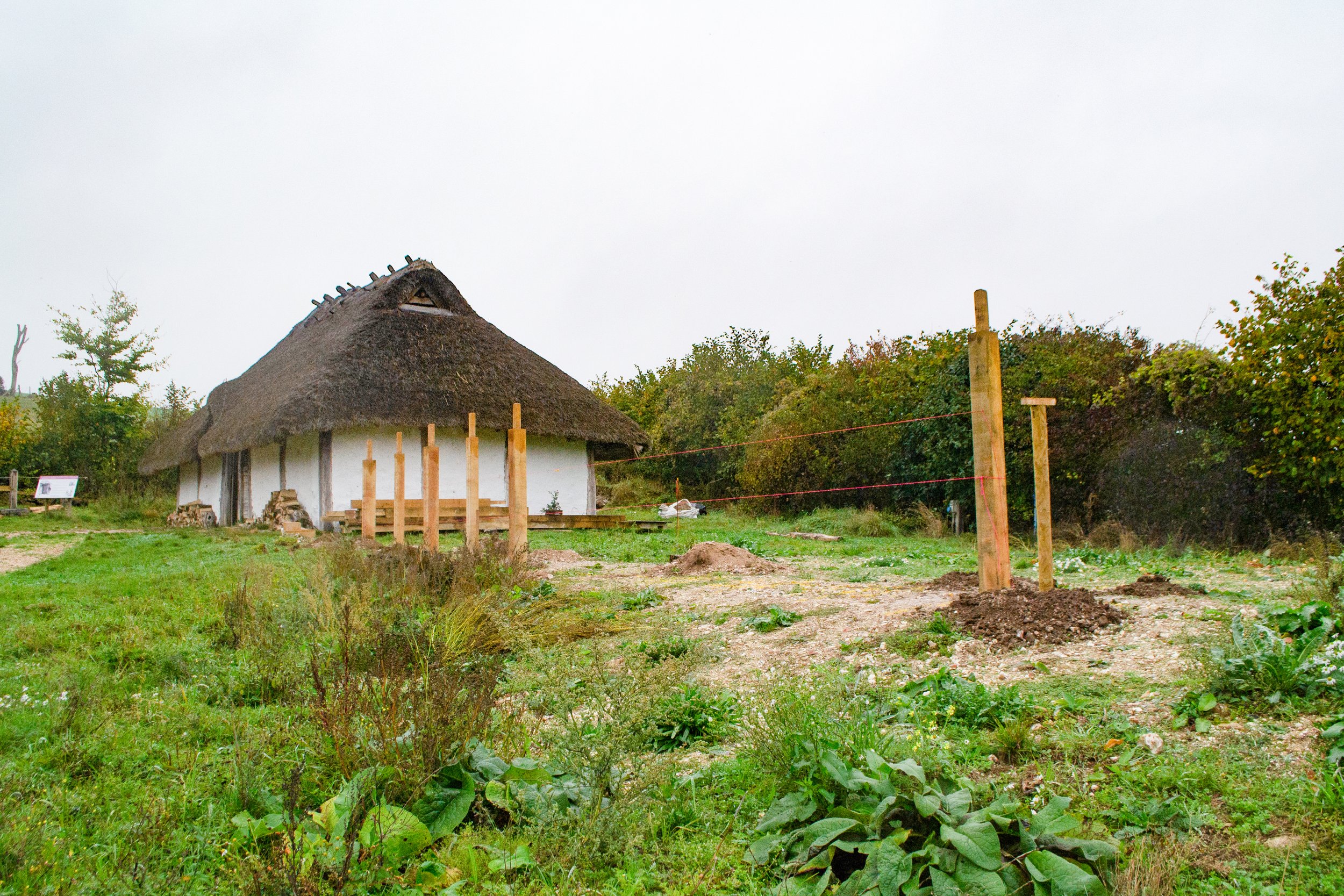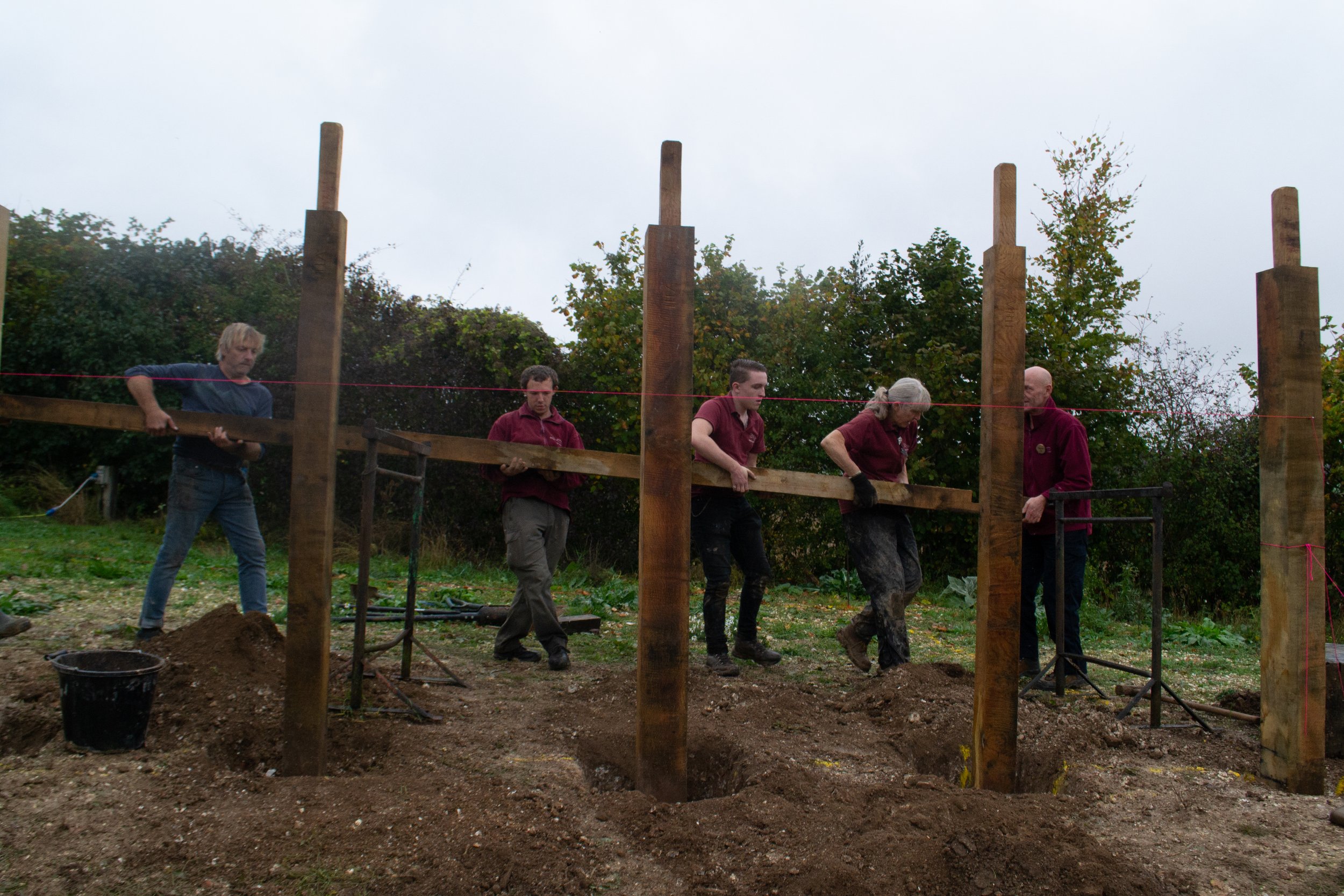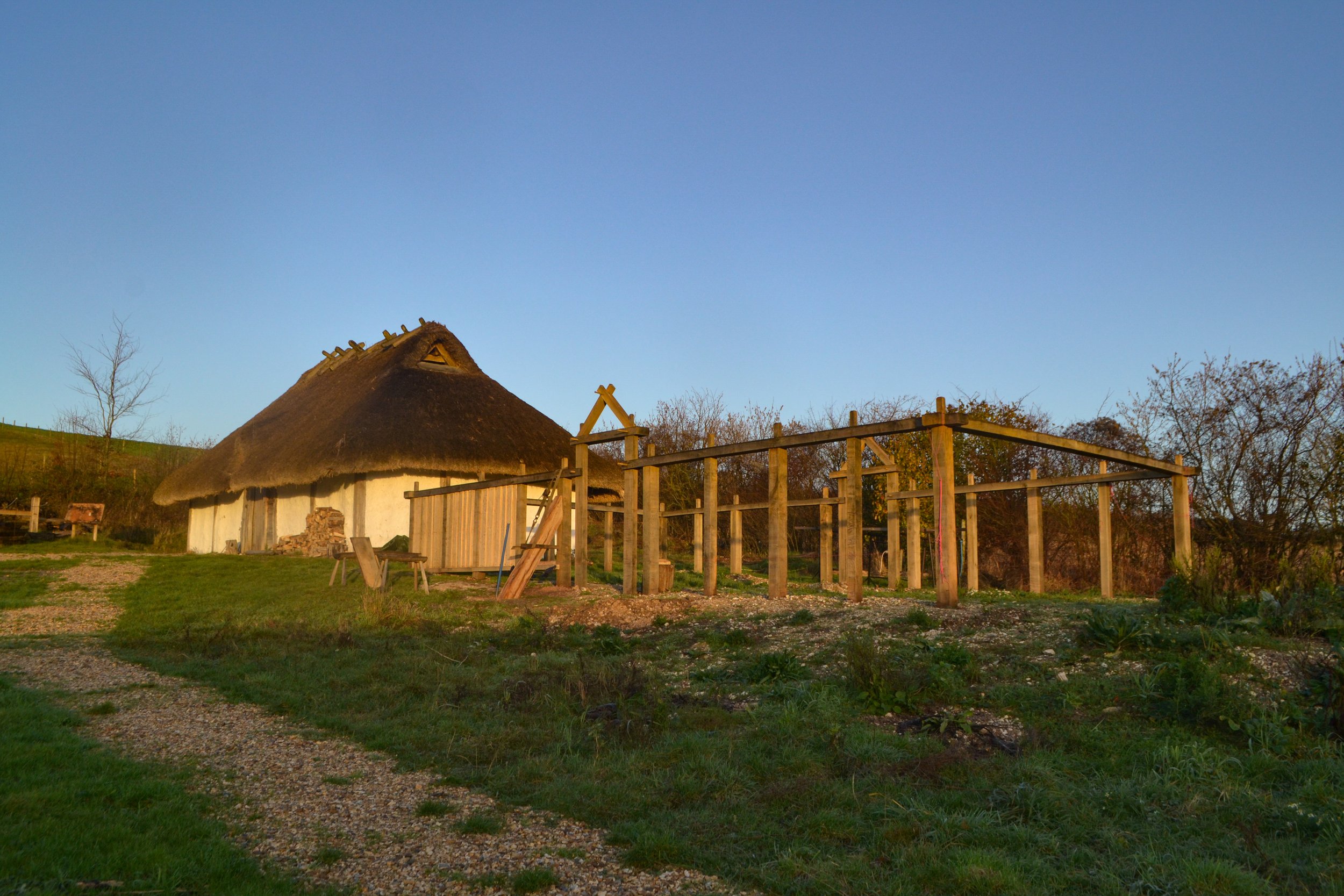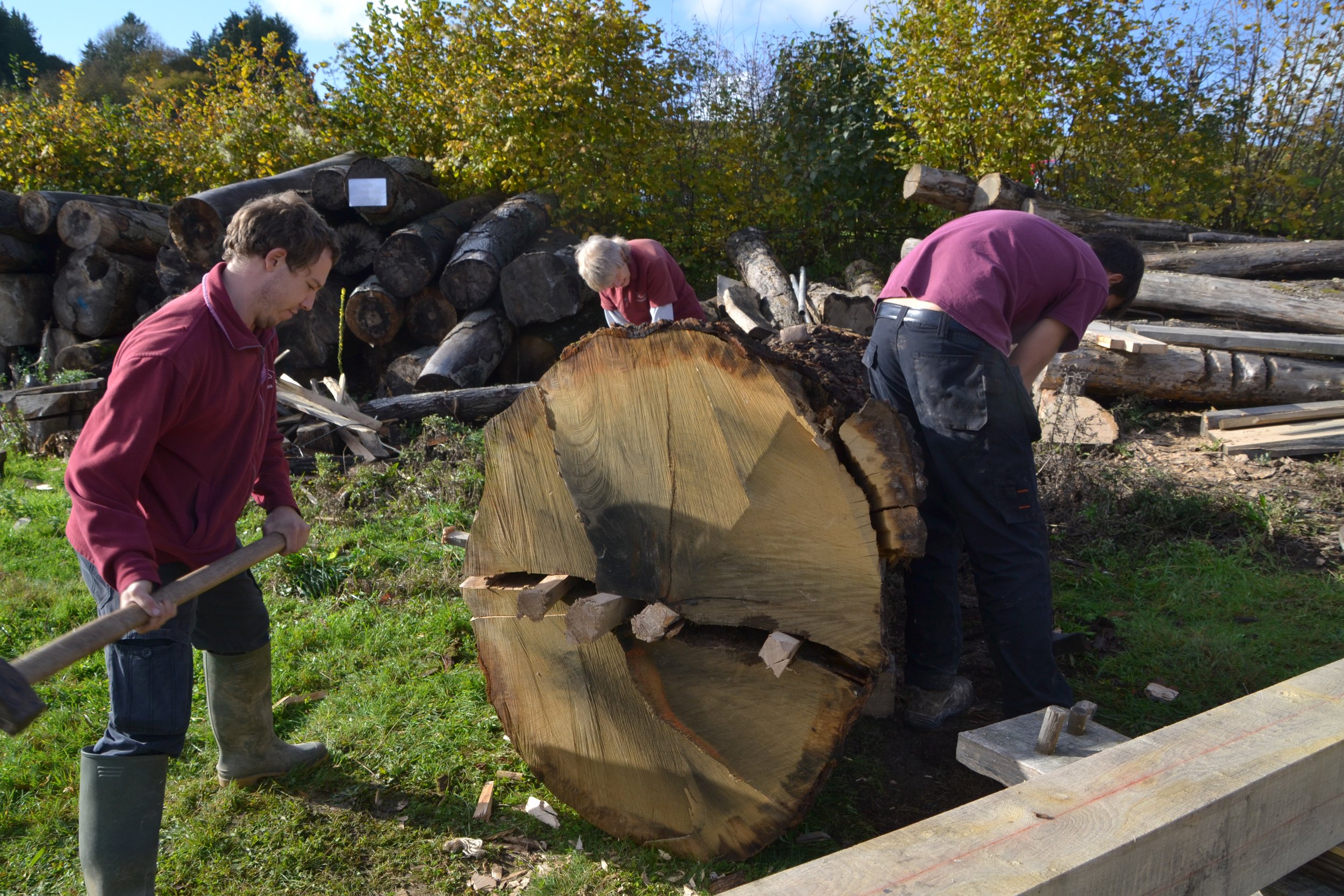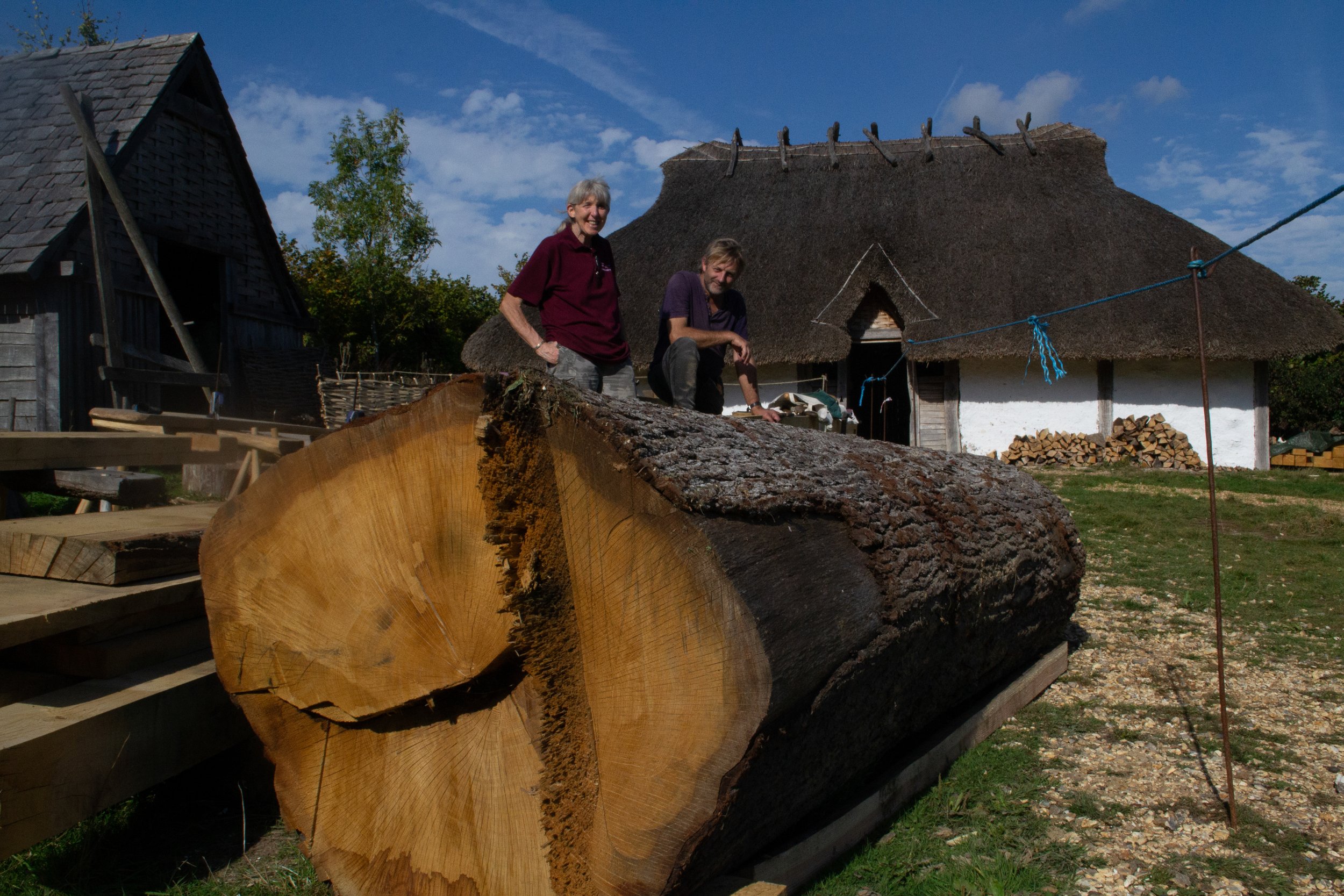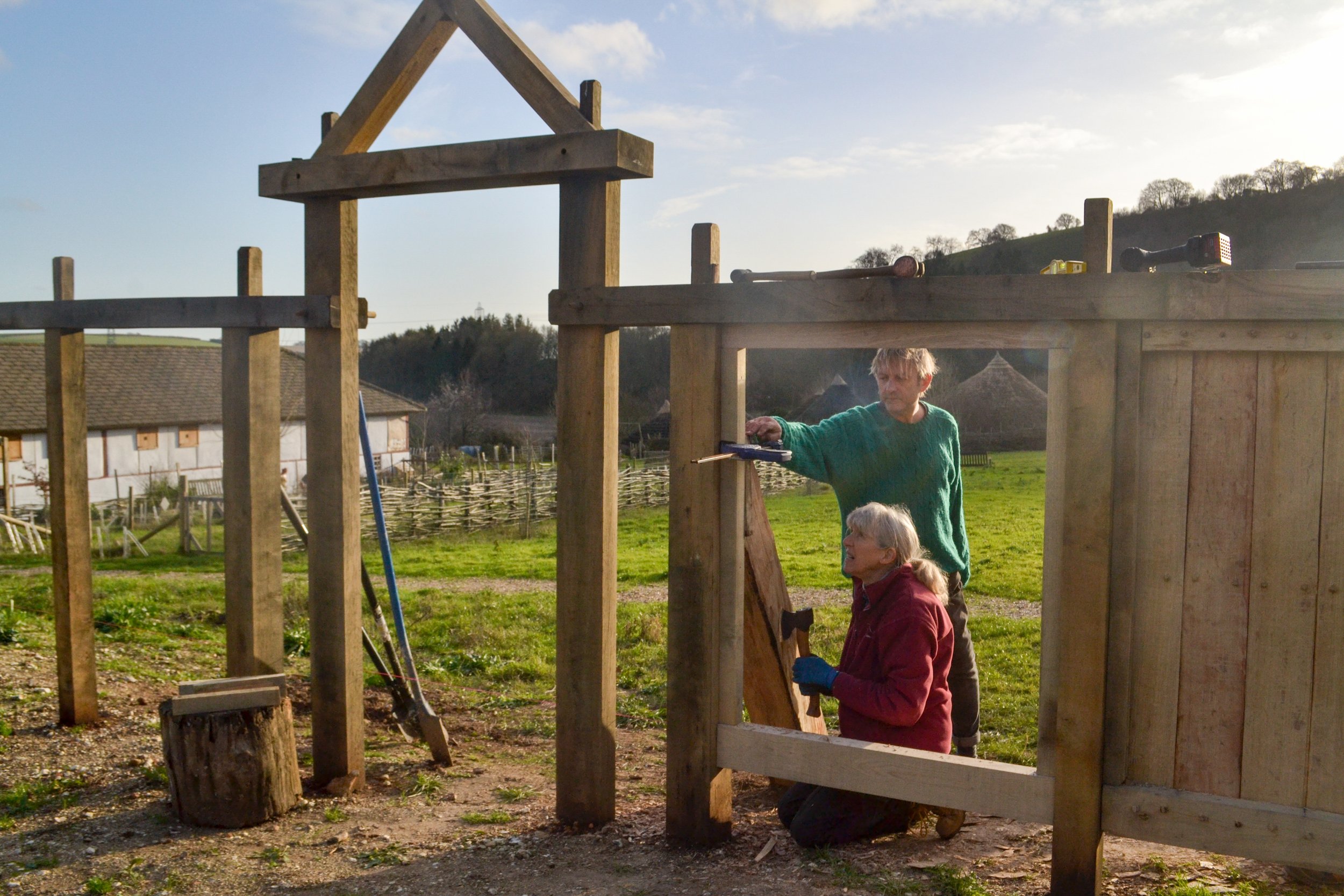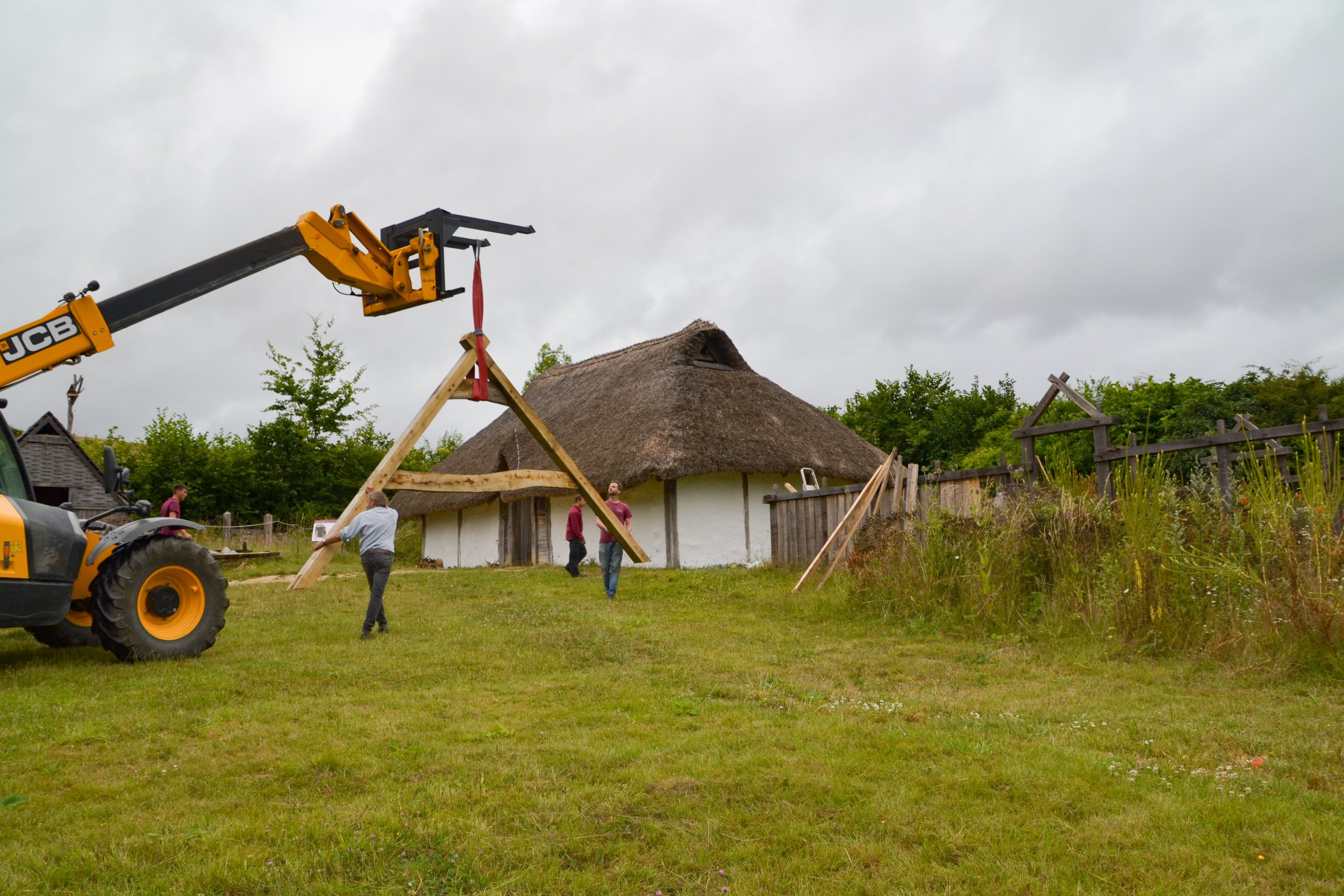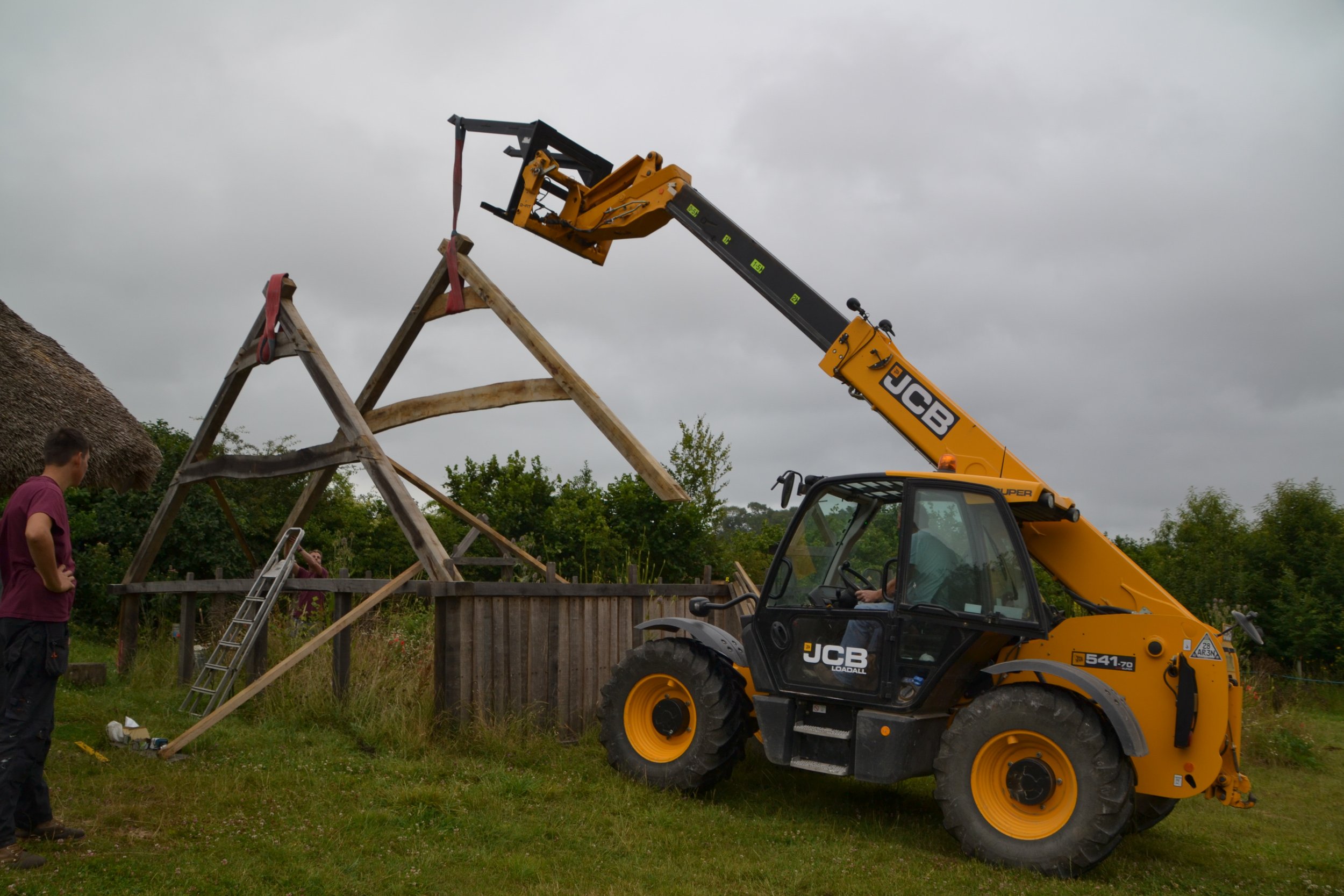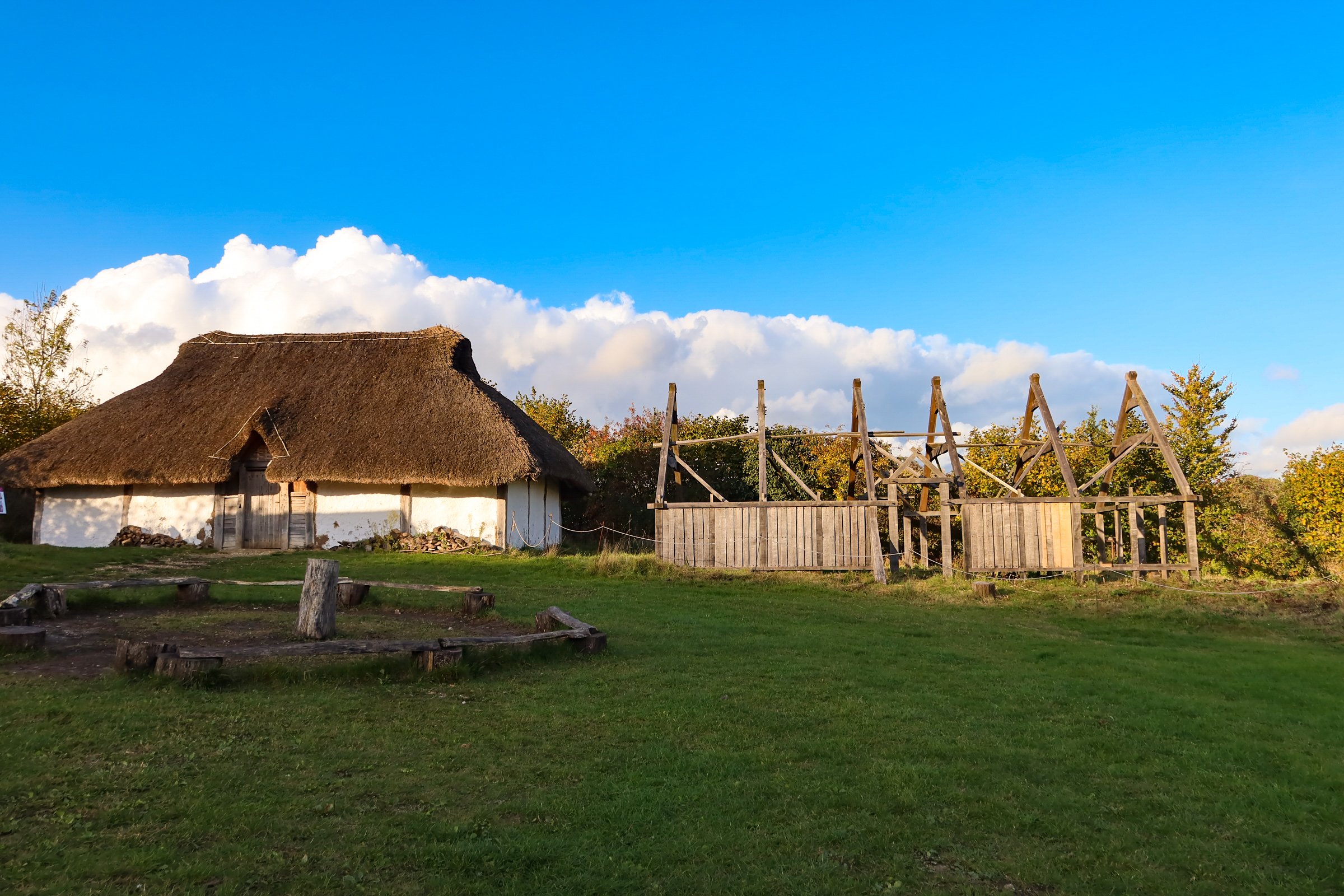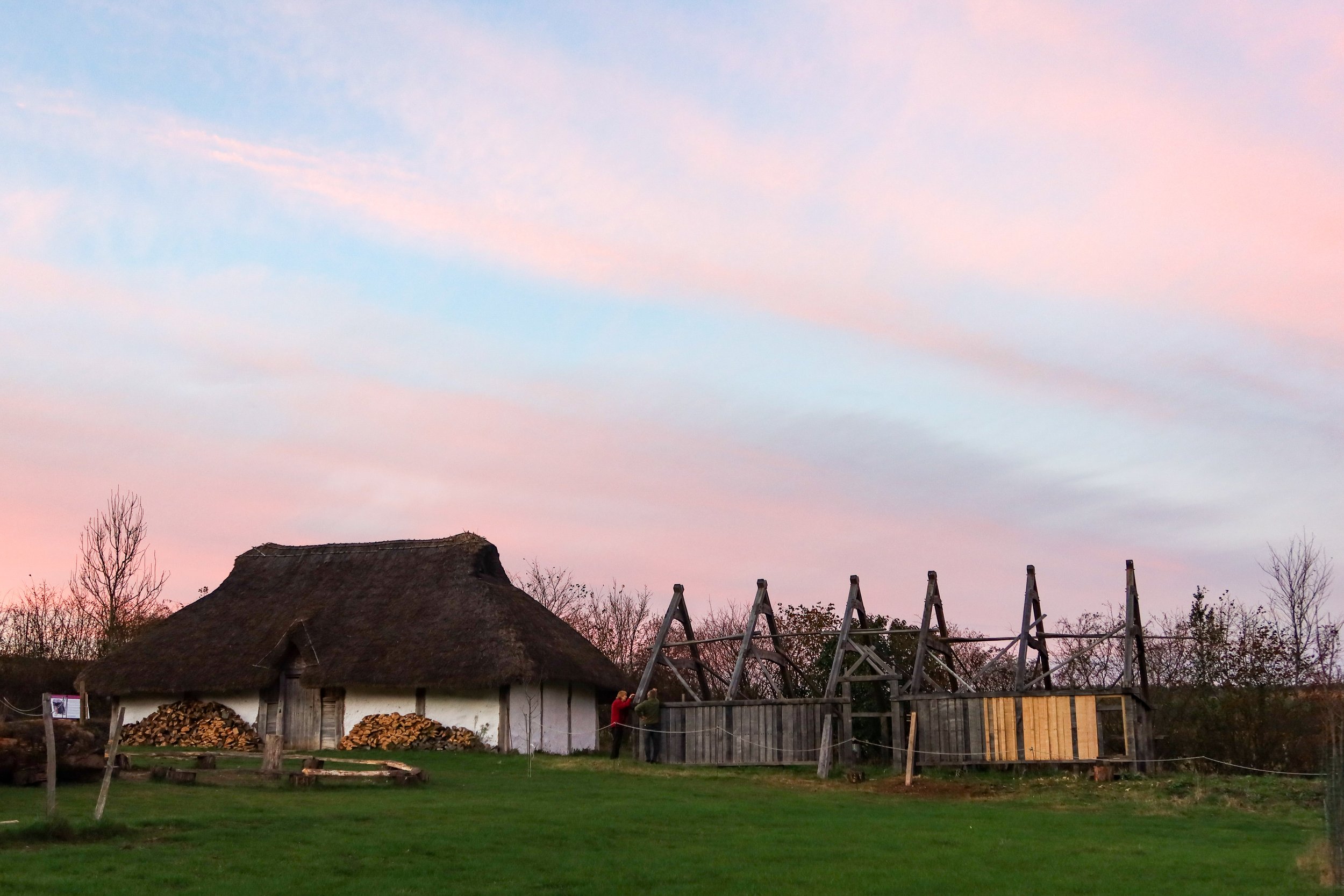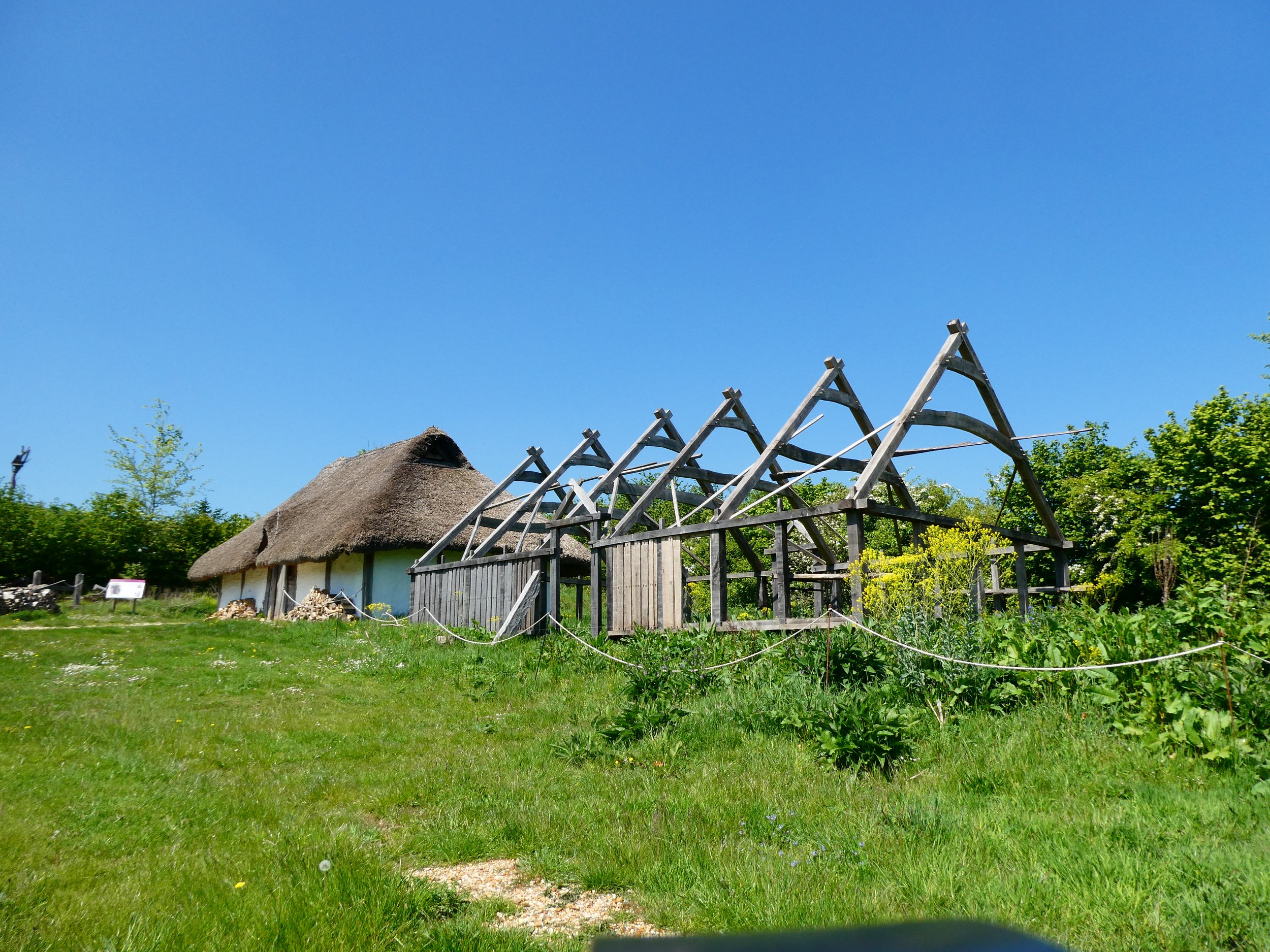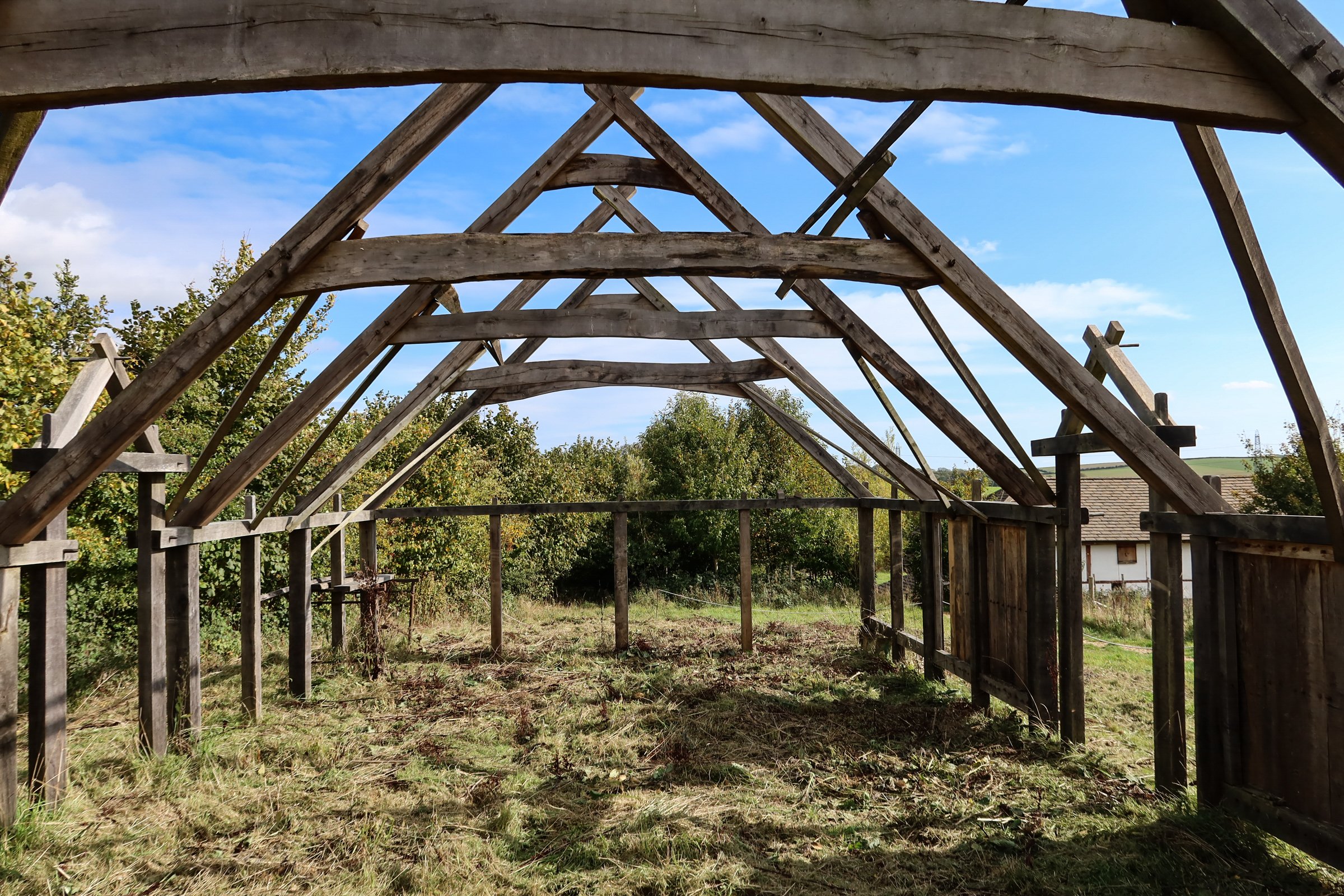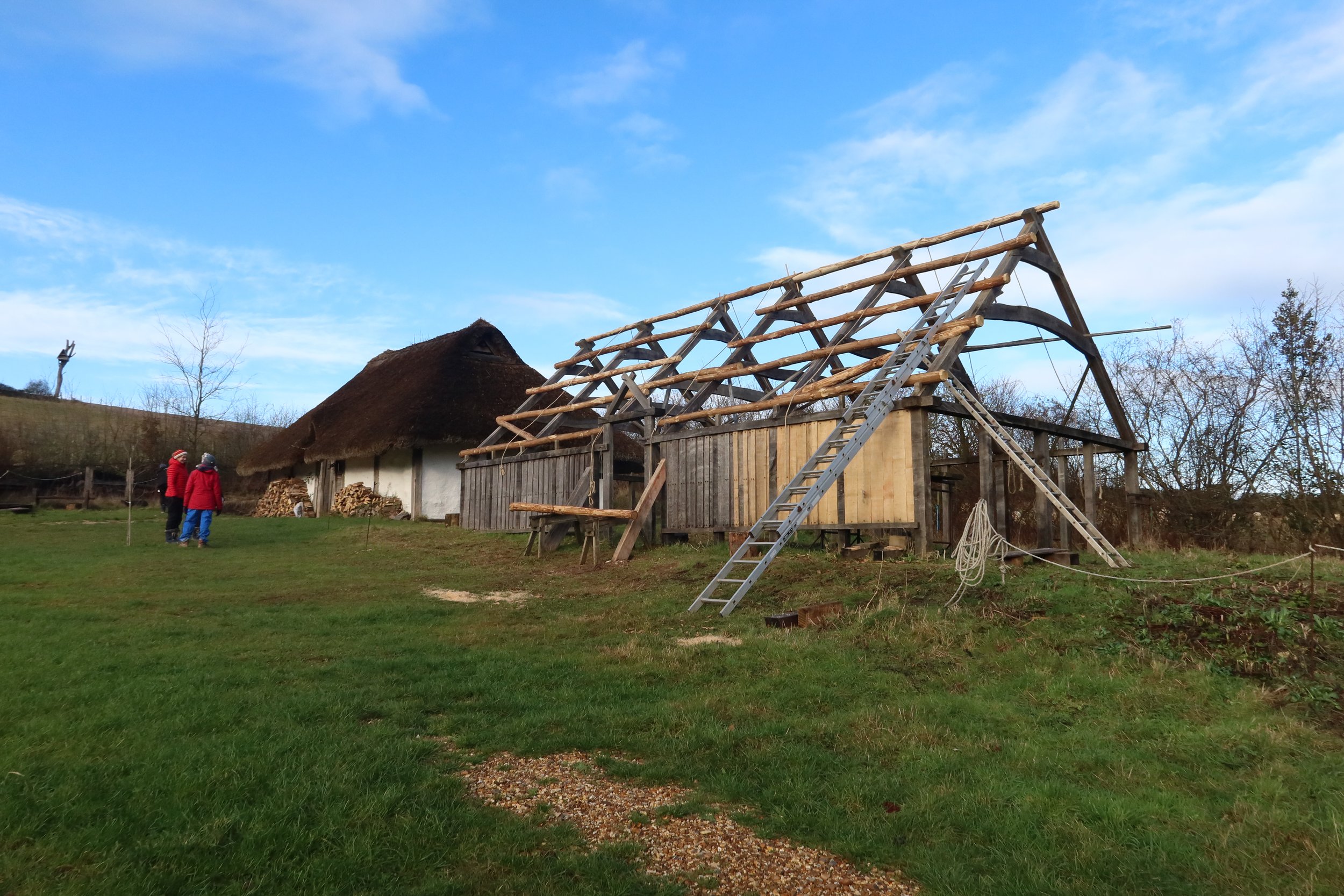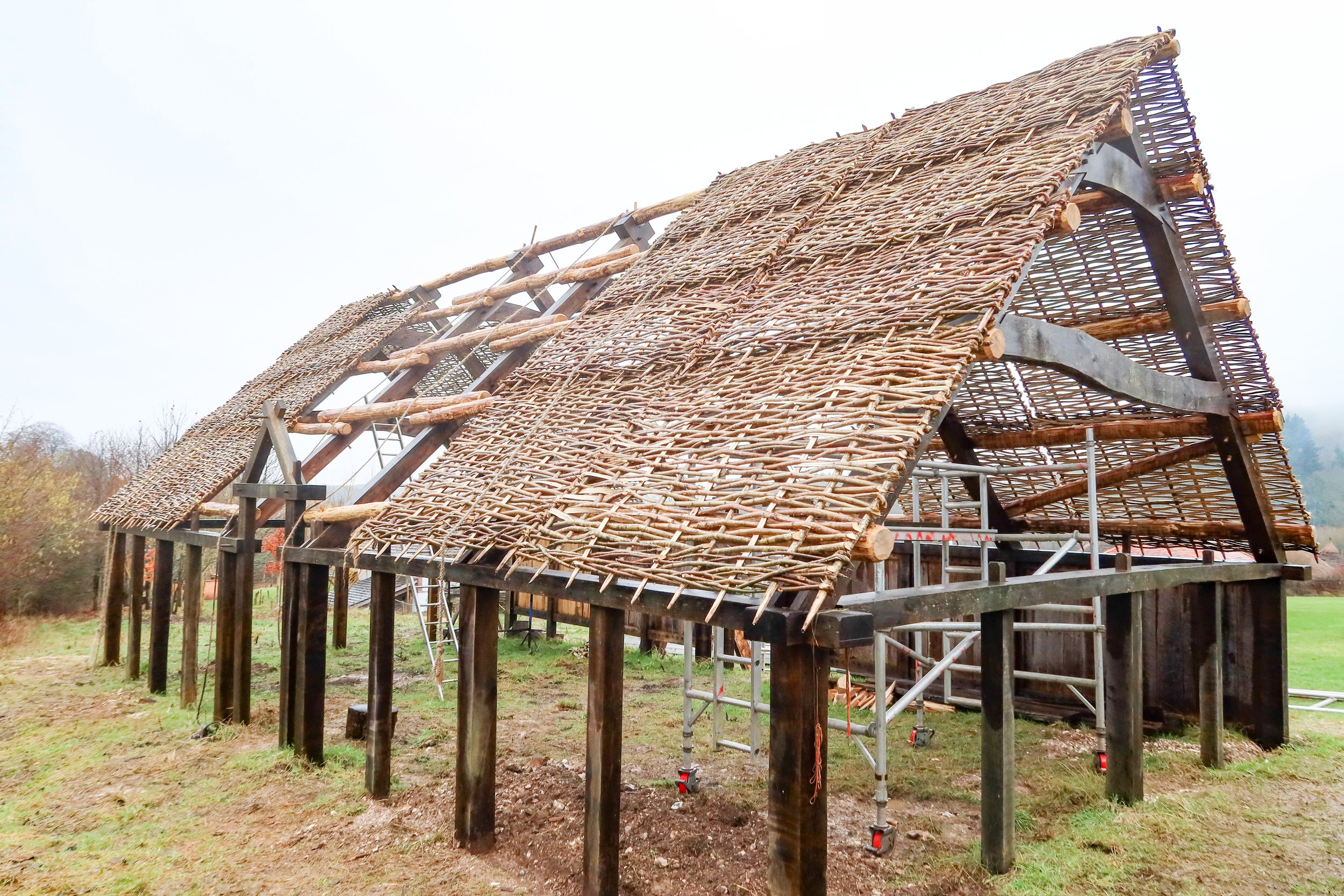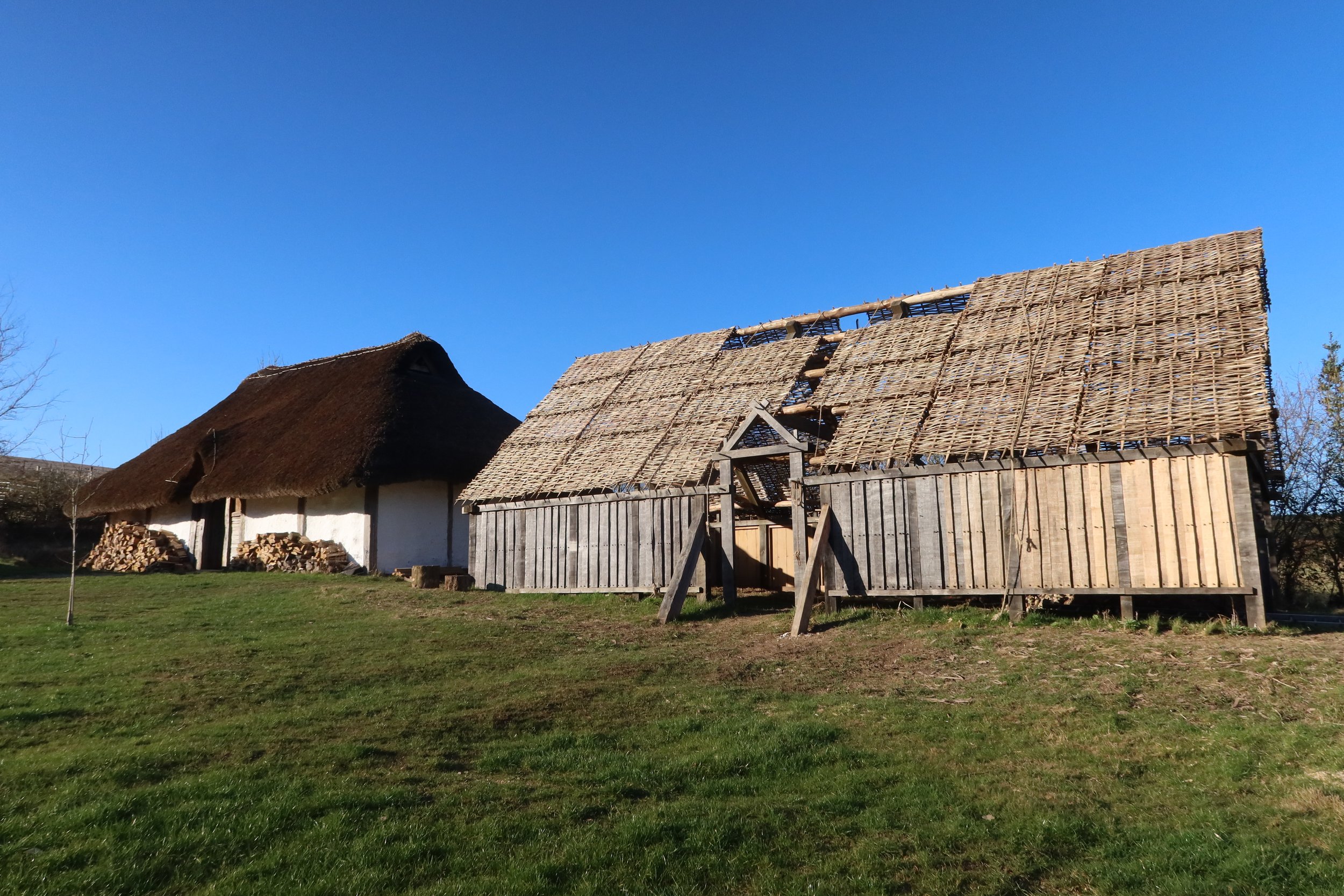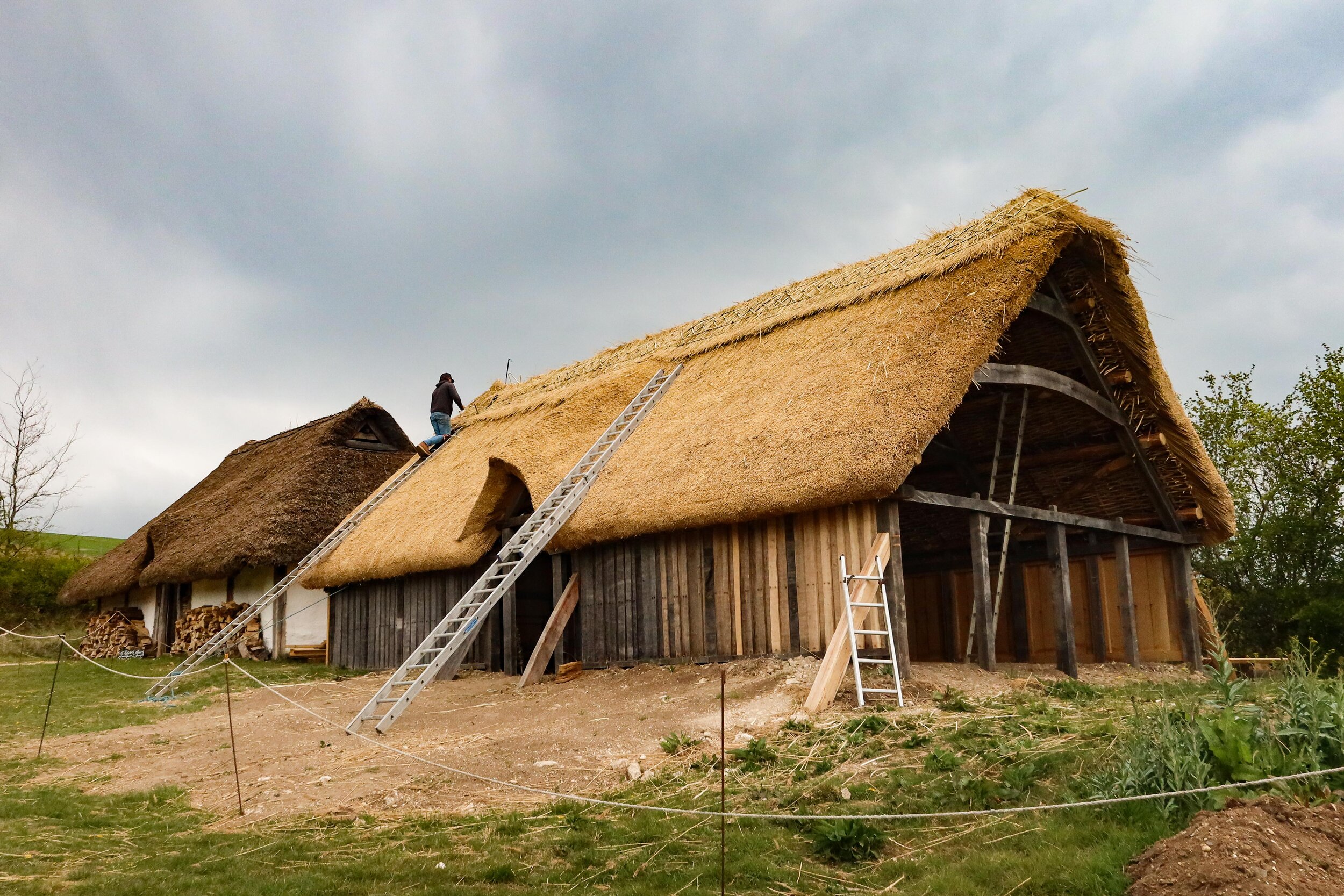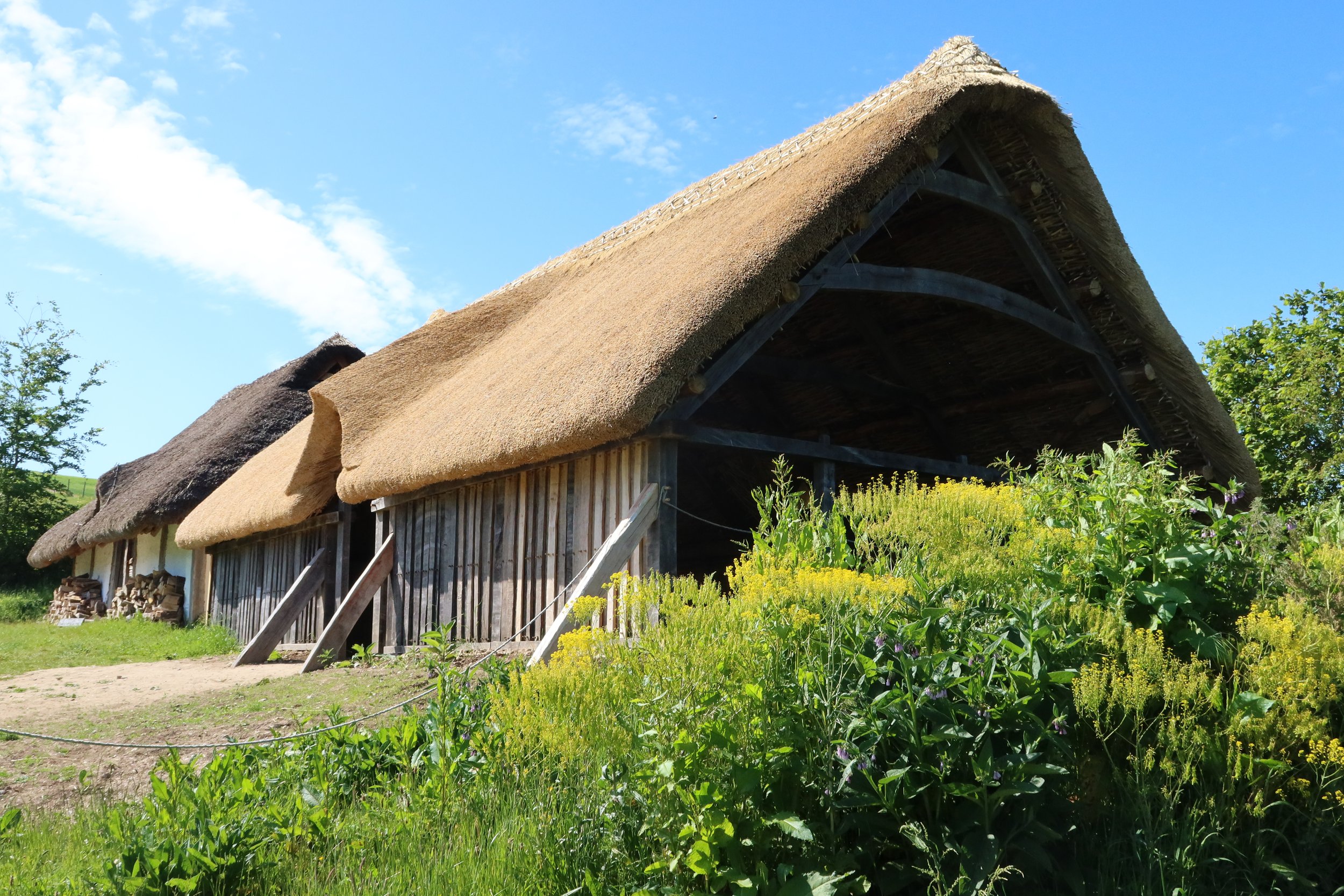Project Archaeologist Trevor Creighton reflects on the completion of the construction of Butser’s second Anglo-Saxon Hall based on local archaeology from Church Down Chalton.
Here on the Farm, we’re really excited to be opening our second Anglo Saxon building - especially me, as it’s my favourite period in British archaeology and history! The first Anglo Saxon building was finished in March 2016, while our second commenced in 2018. They are both based on the foundations of two houses uncovered during excavations close to our nearby village of Chalton. The dig was conducted during 1971-72 by a team led by Peter Addyman, who soon after led the excavation of the famous Viking site, Jorvik, in York (no prizes for guessing where the city’s name comes from). The Chalton excavations were near the very top of Church Down, which is approximately 1.5km south of the village, and were later continued by the University of Southampton, revealing evidence of 61 structures, numerous fences and other features, as well as the remains of animal bones, cereals, metal work and a few small objects, including spear and arrow tips and decorative objects. Rather wonderfully, you can see the site of the excavation from the front doors of the houses.
The illustration below is a drawing by the excavators of the archaeology of the two buildings we have constructed.
Although there’s a fair bit going on in the drawing, you can (hopefully!) see two rectangular trenches drawn side-by-side, slanting slightly across the illustration. These were the foundations of each house, which originally carried horizontal beams and a series of upright posts. In each trench are drawn some slightly irregular circles and each of these is a posthole.
The posts must have been the uprights for a strong frame, and you can clearly see the way our treewright, Darren, has used that archaeological information to create our two buildings. Inside each large, triangular ‘trusses’ are secured to the massive, upright oak posts. This system, joined along the length of each side by horizontal beams between each post, carries the weight of the beautifully thatched rooves and keeps the buildings standing. We chose oak as it was available to the Anglo Saxons, and we know from other evidence that it was favoured in building for its strength and durability.
You have probably noticed that the buildings in the illustration look very similar. So, why have we built two quite different houses? The truth is, we can never know what the originals were like. So, having the opportunity to build two different styles allows us to explore two possible interpretations of the original, which is the experiment in experimental archaeology!
The other postholes, dotted throughout the illustration (and, indeed, the site) served other purposes. Some were almost certainly fences, quite possibly for gardens. We know from the bones left behind that the folk living on the site had pigs and sheep and hunted deer. If they wanted to grow some fruit and veg, they would also have wanted to keep those critters away from the produce. It’s easy to forget that people in the distant past almost certainly had what we would recognise as vegetable patches. We know from seed evidence that, even in prehistory, plants were clearly selected for growing in certain areas, often near houses, so we have reflected this in the terraced beds in front of our new building. And not just cereals – like the wheat and barley we know our Chalton people grew – but herbs and medicinal plants as well. And I don’t think it’s unreasonable to think that maybe they planted for aesthetic reasons. We do, why not them?
It’s really difficult to precisely date this archaeology but, from the archaeologists’ reports, the site itself existed somewhere between 500AD and perhaps as late as 800AD. The most likely dates for the settlement are somewhere in the middle of that range and our houses appear to have been among the last built. I think if we said that our houses stood somewhere around 700AD, that would be reasonable, so long as we are allowed a bit of wriggle-room. More important than dates and postholes is the question of who lived there and what were they doing? Well, I often call our buildings the ‘Saxon houses’. It’s a convenient shorthand, and sounds catchier than ‘Anglo Saxon structures A1 and A2’, which is what they are called in the archaeology report. It’s not (just) laziness on my part. It’s a fair bet that they were houses – and fairly large and well-made ones at that.
They were, and in a way still are, also in the Kingdom of the West Saxons - Wessex, quite close to the border with Sussex (Kingdom of the South Saxons… again, no prize if you knew or guessed that I’m afraid). So, Saxon house seems reasonable. The wider world of the Anglo Saxons was experiencing a period of dramatic change, especially with the expansion of Christianity among the Saxons. In the late 600’s, no less a personage than St Wilfred was making his way down the Meon Valley – just over the hill from us – on his Mission. The Meon Valley was actually home to Jutes, who did not have a happy encounter with Wilfred, but that’s another story. When I went to school, I learned about the ‘Angles, Saxons and Jutes’, but my school days were chronologically much nearer the 7th Century than the present and the poor old Jutes seem to have been largely forgotten now (could I be mistaken about the inhabitants of our ‘Saxon ‘ houses?!). Wilfred would later convert the South Saxons and found the See of Selsey, near Chichester.
Wessex wasn’t exactly a backwater, but it was not yet the pre-eminent Kingdom of the emerging ‘England’ that it would become in the 10th Century, after the mighty efforts of Alfred the Great in the late 800’s. The Midland Kingdom of Mercia was a real powerhouse then and, if you asked the great historian and monk Bede, who was writing about the same time as our buildings stood, he would have told you Northumbria reigned supreme (As a Northumbrian he was, it must be said, biased, though not necessarily wrong).
So, we have Saxons on a hilltop in the 7th and 8th centuries. Were they a group of proud, West Saxon warriors repelling marauders, secure in their high redoubt? Well, no. At least not on the evidence we have. There were a few weapons and a shield boss recovered at the site and nearby. There were knives recovered as well, but don’t read too much into that. Apart from the sheer usefulness of knives, they were a very Saxon thing – after all, the seax is a type of knife that got them their name. It’s not to say that the weapons, or the trusty seaxes, were never used in anger, but I think we probably had a group of people living generally peaceful, farming and craft-based lives. But that still doesn’t explain the hilltop – no water there! In fact, all of the chalk hills and valleys are dry, except during times of heavy rain. They are, but I think we can be certain those valleys were more like permanent streams in the not too distant past. Even now, when we do get a lot of rain, those valleys become ‘Lavants’ or ‘Bournes’, which are old terms for seasonal streams. Both words, as it happens, probably of Anglo Saxon origin. It might have been much more comfortable and drier on the hilltop than in the valley. And the views are great – why wouldn’t a Saxon homeowner build for the view?
By the way, they also left behind some oyster shells. So, these people were not isolated, nor living a necessarily uncomfortable life!
Interesting Factoids
Dr. Peter Addyman was Director of the York Archaeological Trust from 1972 to 2002. He was the director of the famous Coppergate Viking Dig in York, which was effectively the springboard for the Jorvik Viking Museum. The Coppergate dig began with Doctor Addyman digging beneath Lloyds Bank, on the corner of Piccadilly and Pavement. After early finds, he is reported to have said to the bank manager: ‘you have some extremely interesting deposits in your vaults’.
Well known archaeologist Grahame Soffe was on the dig, as was Phil Harding – yes, he with the hat! One of the other dig members was Martin Carver, a keen but inexperienced amateur freshly out of the Army. The dig so enthused him he decided to pursue archaeology as a career. That idea paid off, he is now Emeritus Professor of Archaeology at the University of York and is one of Britain’s leading Anglo Saxon specialists, having directed the major re-examination of Sutton Hoo from 1983-1992
One of the dig supervisors was Catherine Hills, now Dr Catherine Hills, Senior Fellow, McDonald Institute for Archaeological Research and Fellow of Newnham College. In a reminiscence about the dig, Dr. Hills claimed that an early field find of pottery at the site was made by a schoolboy, many years before the fieldwalking and subsequent excavation. His name was Barry Cunliffe (a native of Portsmouth).
So, the Church Down dig has some illustrious connections!
This illustration of the dig is used with the kind permissions of Dr. Peter Addyman and The Journal of Medieval Archaeology.



